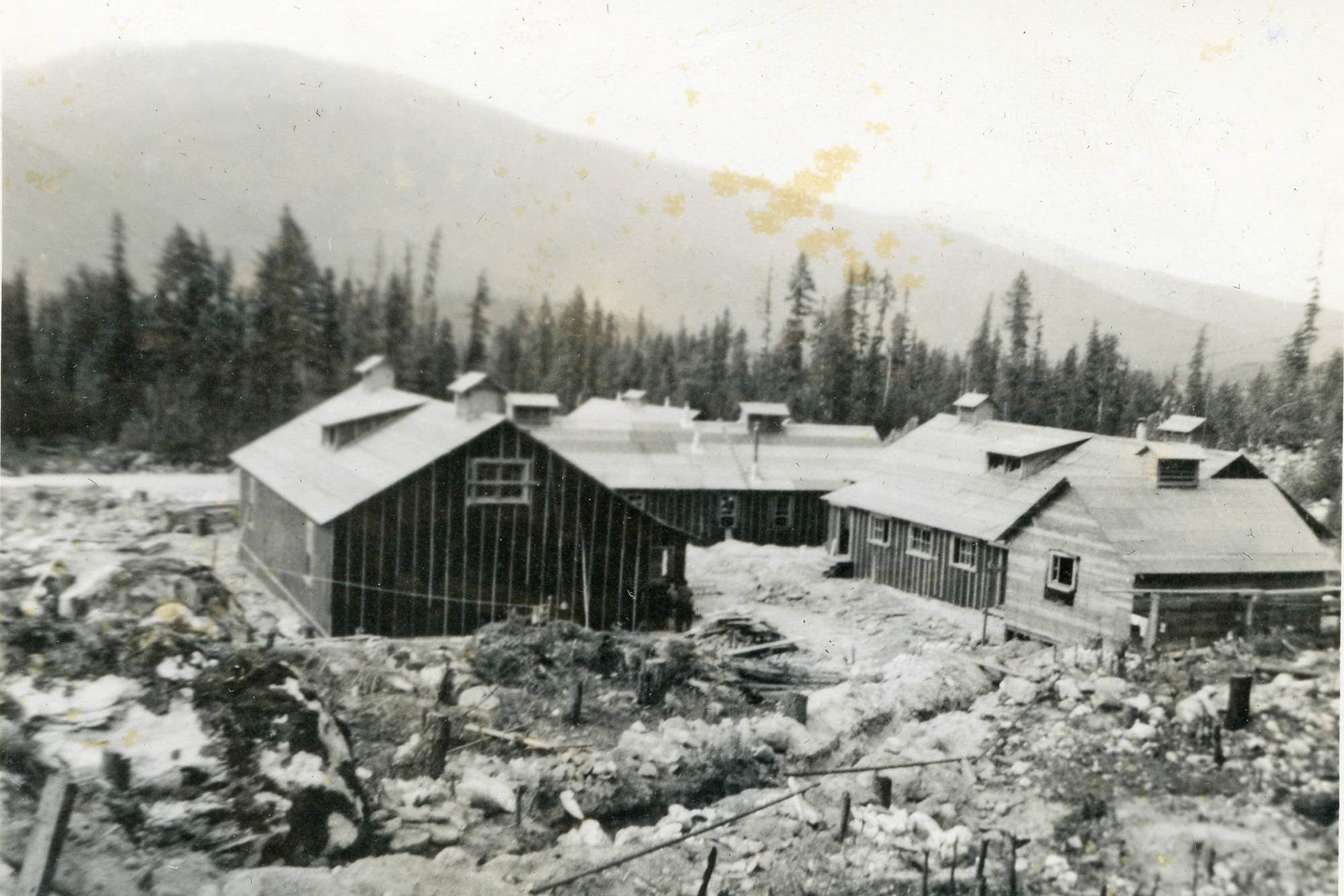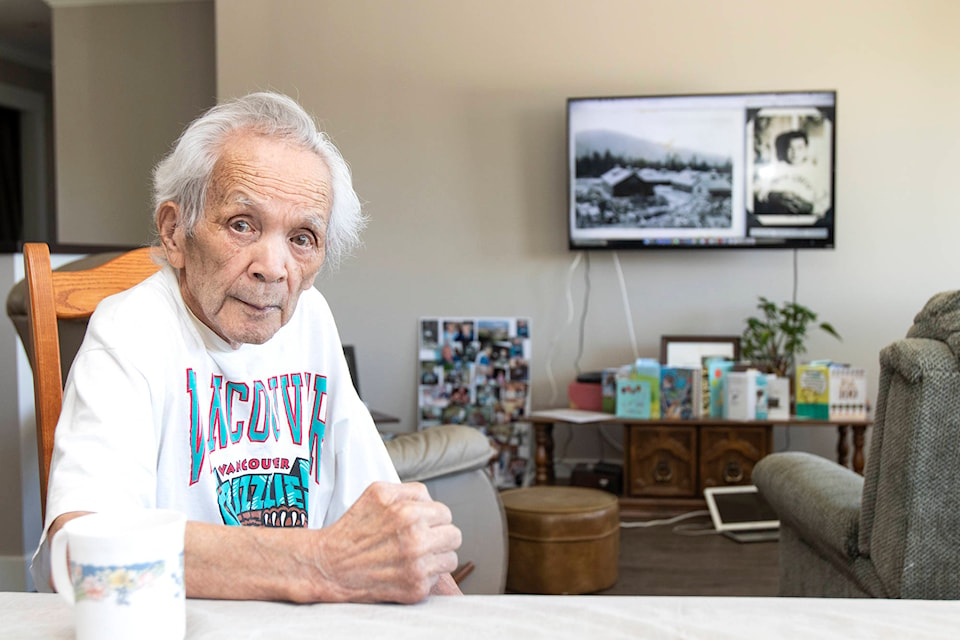By Barb Brouwer
A notice in the mail and an item in the local newspaper in early spring 1942 changed Tamotsu (Tam) Nakazawa’s life forever.
Born in Canada and residing in the Marpole neighbourhood of Vancouver, Nakazawa was told to report to Hastings Park for relocation to a work camp.
Considered to be a possible national security threat, the now 100-year-old Salmon Arm resident was among some 20,000 Japanese Canadians removed from the Pacific Coast in 1942.
Each person was allowed only 100 pounds of personal items such as clothing, bedding, toiletries and mementos.
Nakazawa’s house was confiscated and selling his household items gained little because people took advantage of the fact he was being forced to leave and offered very little money.
“This was war, so what could we do?” says a philosophical Nakazawa 76 years after the fact.
Looking back, he says there were about 100 men in the Yard Creek camp, one of five camps located between Sicamous and Revelstoke.
The cabins were made of shiplap wood insulated with tar paper, offering minimal shelter from the Shuswap’s seasonal temperatures.
During the day the men worked on upgrading the Trans-Canada Highway, which, at that time, was a dirt road between Revelstoke and Sicamous and was closed down for the winter months. Nakazawa says the men in his camp worked on the road between Yard Creek and Sicamous.
The men were paid 25 cents an hour for their labour but had to buy their own work clothes and pay 75 cents for meals.
Longtime area resident Alli Graham says the stretch of the TCH was then on the north side of the railway tracks. But the federal government expropriated part of cleared pasture land on her family’s farm to move the road to its present location.
Eighteen years old at the time, Graham says friendships were forged between her family and some of the internees from Yard Creek camp which was about three miles east of the family farm.
The introductions came when two men arrived to help Graham load hay into the loft because her father was unable to do the work. When they were finished, they lingered in the yard, waiting while the “powder man” in charge of road blasting was inside enjoying her mother’s coffee and pie.
Their reply when she asked them why they weren’t inside too was that they were dirty.
“I have been doing the same work and am just as dirty as you,” she replied, ushering them in the door. And one of them made a subtle suggestion about buying pie and coffee,” she laughs.
Graham recalls some of the “boys” arriving at the farm asking for water and directing them along a shady trail to a spring.
She recounts the day a road superintendent showed up unexpectedly at the door while two of the internees were chopping and stacking wood instead of working on the road. They hid quietly in the wood shed until the official left, at which point, “we all had a good a laugh,” she says.
Another memory Graham shared with Nakazawa was the occasional raid the men made on a local ice house so they could make their own ice cream.
She was also impressed that the men at Yard Creek planted gardens around their cabins and lined the walkways with rocks in an attempt to beautify their surroundings.
Touched by their generosity of spirit and compassion, Graham treasures a photo and memory of the day in 1943 when her dad died. A group of the Yard Creek men delivered a large commemorative wreath they had made to mark the occasion.
Friendships were formed between Nakazawa and area residents. And while he received no compensation from the government of the day when he was released at the end of the war, Nakazawa secured work with Bush Graham, who would later become Alli’s uncle-in-law.
Working in the bush suited Nakazawa who settled in Sicamous.
“I never thought about going back (to Vancouver,)” he says. “There was nothing there for me anymore.”
Nakazawa met Kikue (Kay) in Sicamous, marrying her in 1949 and producing five children.
Also a Canadian, Kay began her internment in horse barns at the Pacific National Exhibition (PNE) grounds in Vancouver, before being transported to a camp in New Denver for the duration of the war. The couple now make their home with their oldest son, Tom, in Salmon Arm.
Nakazawa’s story will be woven into a project Tomoaki Fujimura has volunteered to take on at the request of Burnaby’s Nikkei National Museum and Cultural Centre to discover as much as possible about the early Japanese presence in the area.
A Revelstoke resident, Fujimura works for Parks Canada in the summer and the Canadian Avalanche Association in the winter.
He explains that in 1885 when the CPR line was finished, workers from China and India departed and Japanese workers were hired to work on double-tracking.
The Sicamous and District Museum and Historical Society is looking for memorabilia and stories related to the internment camps for a planned exhibition at the museum.
For more information, or to share any memorabilia, call Terry Sinton at 250-836-4613 or email terrysinton@cablelan.net. Or call the historical society president Gordon Mackie at 250-804-6347.
newsroom@saobserver.net
Like us on and follow us on





